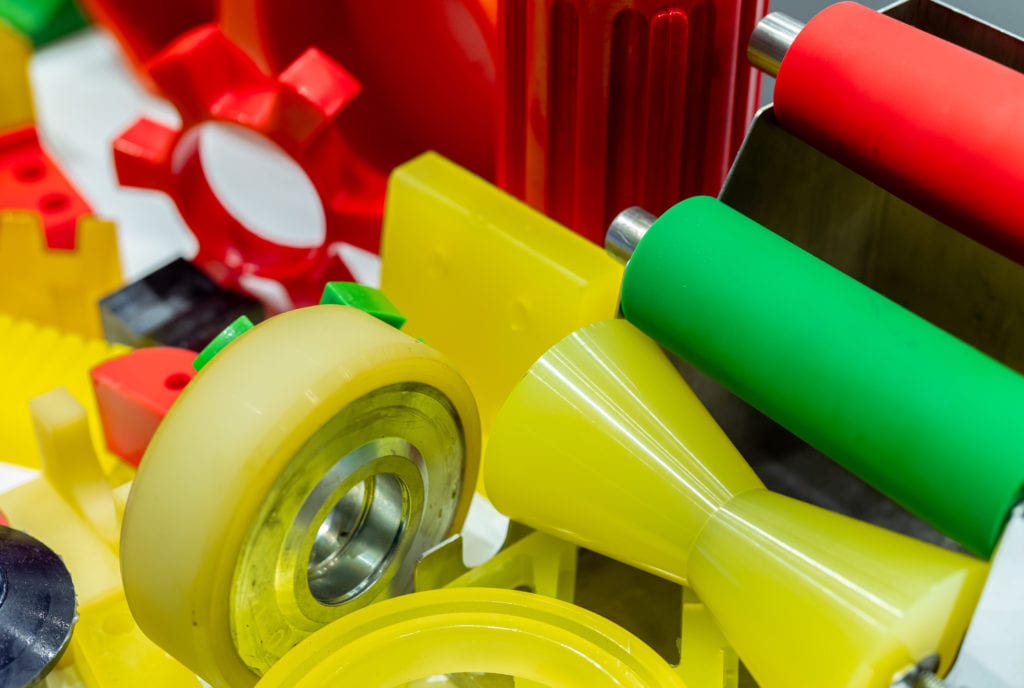Urethane casting, also urethane molding, is a low volume process that uses 3D models to produce products mimicking the real pieces. Engineers and designers love it because, other than producing excellent prototypes, it’s a low-cost process yielding results in the shortest turnaround time without compromising the specifications.
Also, unlike fabrication, it requires minimal finishing thanks to silicone rubber molds that allow formulations featuring different properties. It means that one can instantly set and execute parameters relating to aesthetics and color. The procedure is instrumental in reducing the tooling costs as it eliminates the need to acquire several molds.
While urethane casting packs tons of advantages, it doesn’t escape scrutiny. When it comes to bridging the production process and quickly getting great pieces into the market, urethane casting has a dap hand. But the low volume stands in the way of scaling production.
And the greatest downside is that it allows for the production of rigid and flexible plastic parts only. You can think of it as a process ideal for tweaking rubber and thermoplastics to generate exceptional textures and shapes. It can’t accommodate metals because vacuum casting blends well with flexible materials that form silicone molds easily.
But the shortcoming does not limit the applicability of urethane casting. It has prominence in various fields validating small-scale production and seeking to test the functionality of new designs. And it is because;
Urethane casting allows for prototyping
Whenever a production doesn’t validate injection mold, urethane casting comes in to provide high-quality prototypes. Although silicone molds need replacing periodically, they are flexible and conform to different patterns. Silicone qualifies as an excellent prototype material because it is cheap and allows modification.
Further, it takes a shorter time to cure them. On average, a hard mold forms after three days, and because it allows blending materials on a single mold, the final product carries all the specifications. If it fails to meet all the specs, one can schedule a rework to capture key designs under a small budget.
Customers can test the final product and react to functionality. Their sentiments are vital for the final step because they help the developer incorporate critical aspects before the final launch.
Urethane casting yields both flexible and rigid materials
Urethane casting relies on 3D printing to generate varying shapes. The silicone mold absorbs the 3D pattern to produce urethane parts. And because it is a soft tool, one can derive flexibility from it by changing designs to meet custom specifications. The developer can then manipulate the mold to achieve hard or flexible items.
Thermoset tools favor a designer when removing some parts and adding flexibility. Injecting molds lack flexibility, and it makes them unsuitable for designing undercuts. And it makes urethane casting a king of flexibility, allowing iterative designs.
Urethane casting is relatively cheaper
For starters, installing a urethane casting is cheaper when compared to injection molding. Urethane casting adopts a simple process characterized by insanely soft and flexible tools. And it allows for easy addition of color when silicone is at the liquid stage. The best part is that products adopt a permanent color that is resistant to wear and does not compromise the texture.
All the magic happens in one mold, meaning one doesn’t incur extra expenses to cater to an elaborate process. And because silicone molds give fine finishing, complete products are ready for use without additional fine-tuning.
Final thoughts
Casting urethane is a relatively cheaper process ideal for making prototypes in the shortest turnaround time. It possesses a lean procedure with only three simple steps loaded with flexibility. And because it is a low-volume process, one can test various prototypes parts before launching the real product and upscaling production eventually.


